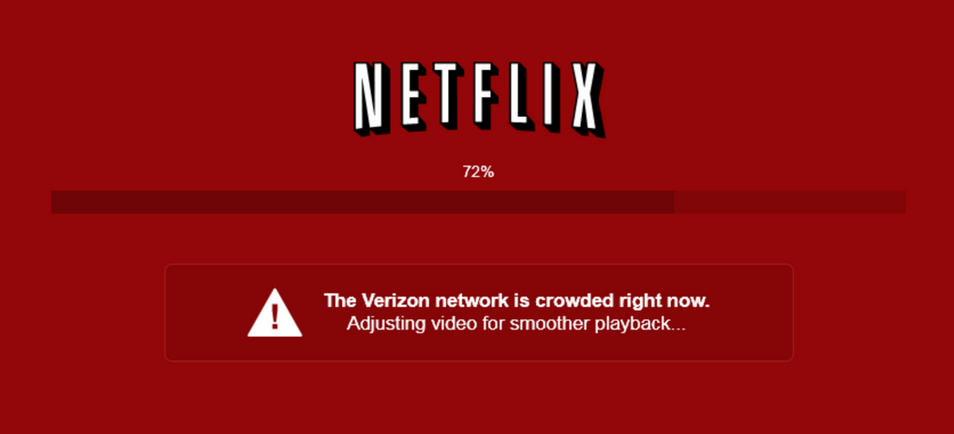Netflix Tests Passive-Aggressive Buffering Messages To Call Out Slow ISPs
 When your streaming video of Charles In Charge comes in pixelated and is regularly interrupted by pauses for buffering, is it the streaming service or your ISP? New messages being tested by Netflix attempt to point the finger straight at the other guy.
When your streaming video of Charles In Charge comes in pixelated and is regularly interrupted by pauses for buffering, is it the streaming service or your ISP? New messages being tested by Netflix attempt to point the finger straight at the other guy.
Vox Media’s Yuri Victor Tweeted the above screengrab of his Netflix feed, complete with a message that “The Verizon network is crowded right now,” a not-at-all-subtle jab at Verizon, which has spent the better part of a year allowing Netflix data to bottleneck before reaching the end-user.
To which Netflix’s Jonathan Friedland replied, “we’re always testing new ways to keep members informed.”
Starting last summer, downstream speeds for Netflix customers began to slow for users with Internet service from Verizon, Comcast, and AT&T; going from acceptable to barely functional as these companies refused to open up more connections at the points where Netflix’s bandwidth providers — the ones who do the actual heavy lifting of carrying the streams from the servers toward the users — meet the ISPs’ networks, which only carry that data for the last mile to the end-user.
Comcast was the first to agree to a paid-peering deal with Netflix, allowing the streaming video company more direct access to its network for an undisclosed amount of money. The improvements in speed were almost instantaneous, though Netflix has continued to gripe about these arrangement and has called on the FCC to consider the issue of peering and interconnectivity in its discussion of net neutrality.
Then at the end of April, Netflix and Verizon came to a similar accord. It’s too soon to say whether the rebound in speeds will be as immediate, but the decision to employ this finger-pointing messaging makes one wonder how well these two are getting along.
Want more consumer news? Visit our parent organization, Consumer Reports, for the latest on scams, recalls, and other consumer issues.


